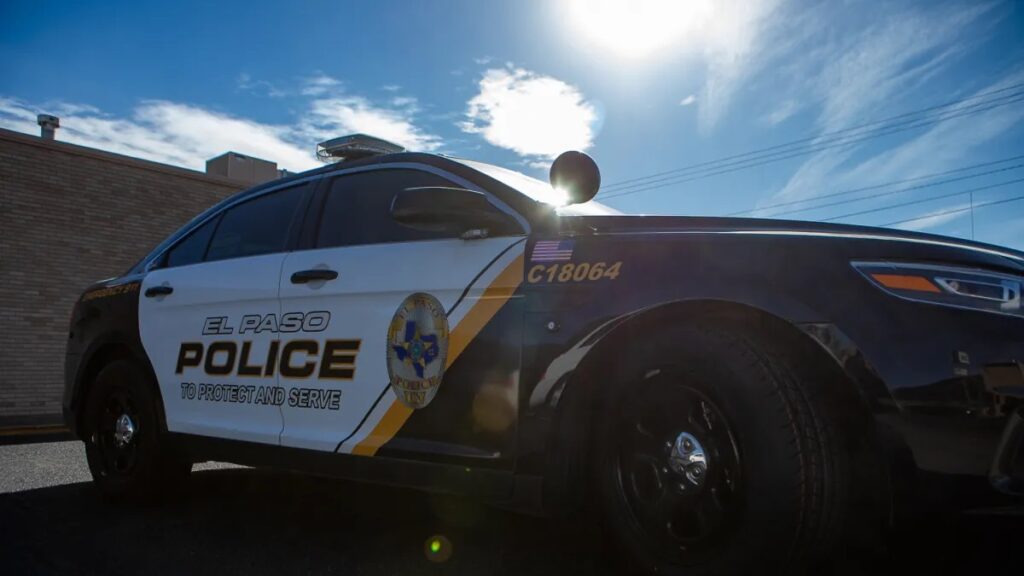Jury finds EPPD officers violated pursuit policy in deadly chase

Two El Paso Police officers involved in a vehicle pursuit in 2016 did not follow department policy or accurately assess the risk to innocent bystanders before beginning a high-speed chase on Stanton Street that resulted in the death of a bystander, a jury found last week.
On Tuesday, the El Paso City Council voted to appeal the verdict instead of paying more than $300,000 to the family of Annette Martinez, 52, who died after being hit by a vehicle the police officers were chasing.
"The jury found the officers and the department were negligent when they broke their own policies and did not consider the risk to the community of a high speed chase on Stanton Street," said Lynn Coyle, the lawyer who represented the family in the lawsuit.
City of El Paso officials said they could not comment on the lawsuit. All questions were referred to Tuesday’s meeting, where the council voted to hire an outside firm to manage the appeal.
The city has twice tried to dismiss the case, citing that police officers and government officials are immune from civil lawsuits while they are conducting official government business. The Eighth Court of Appeals ruled in early April that the officers and the city could be sued.
“(The officers) failed to assess the risks of a high-speed chase; and the officers knew the address of the suspects and could have arrested them later, or arrested them as they walked out of the house they were burglarizing,” Eighth Court of Appeals Justice Lisa Soto wrote in the opinion, which allowed the lawsuit to continue.
The ruling by the district court and the court of appeals to let the lawsuit proceed is significant as federal and state laws provide police officers, and government officials, with immunity from civil lawsuits as long as the officers are acting within the scope of their government duties.
High-speed Pursuits
Coyle also said the ruling should force the city police department to reinforce its vehicle pursuit policy. The policy, effective December 2021, states that there must be a clear and immediate threat posed by the vehicle in order to justify a pursuit.
Vehicle pursuit policies have been a hot topic in El Paso as there were 23 vehicle pursuit deaths in 2021 linked to Border Patrol encounters, according to a tracker compiled by the American Civil Liberties Union.

In an effort to stop the increase in pursuits and deaths, the Border Patrol issued a new policy in January that prohibits agents from engaging in a vehicle pursuit solely on the grounds of a vehicle failing to stop at a checkpoint or yielding to an agent attempting to pull it over. Instead, Border Patrol agents must consider the severity of the crime and any threats posed by the subjects to the public, according to the new federal policy.
The federal policy now falls more in line with the El Paso County Sheriff and El Paso Police Department policies. The Texas Department of Public Safety vehicle pursuit policy is at the discretion of the trooper, according to past DPS statements.
The Sheriff’s Office pursuit policy specifies four factors, all of which must be in place in order for a deputy to pursue a vehicle: probable cause of a violent felony offense, a clear and immediate threat to public safety, the need for immediate apprehension outweighs the danger posed by a pursuit and the deputy’s authorization to use their vehicle’s emergency equipment.
EPPD Stanton Street Pursuit
On March 4, 2016, El Paso Police officers were staking out a house on Robinson Street in Kern Place as they suspected home burglars were targeting the area. They watched the home for 12 minutes. After seeing two alleged burglars exit the home, the officers chose not to make an arrest, according to the lawsuit.
Instead, the officers began following the car which the two suspected burglars were driving. When the suspects began speeding on Stanton Street, the undercover officer in an unmarked car without any lights or sirens began a high-speed chase. A second officer in a marked police car also joined the chase.
At times, the officer in the unmarked car was traveling at more than 60 miles per hour in a 30-mile-per-hour zone on Stanton Street, according to the lawsuit and evidence presented at the trial. The marked unit was traveling upwards of 71 miles per hour in the same area.
During the chase, the 17-year-old driver who was trying to evade the police, Aaron Roacho, side-swiped a 2003 Hyundai Elantra and then struck a 2009 Ford Fusion that was stopped at a red light, according to police reports.
Annette Martinez, her daughter and a 6-month-old were in the Fusion, which after being hit, collided with another car, a Buick, according to police reports and testimony. The Buick then hit another car, and three seconds later, the officer in the undercover vehicle struck the Hyundai. Martinez was the only person seriously hurt. She died later of the injuries sustained in the crash.
Roacho was arrested and charged with murder. In 2018, he was sentenced to 25 years in prison. The second suspect in the car with Roacho was a juvenile.
This article first appeared on El Paso Matters and is republished here under a Creative Commons license.![]()
